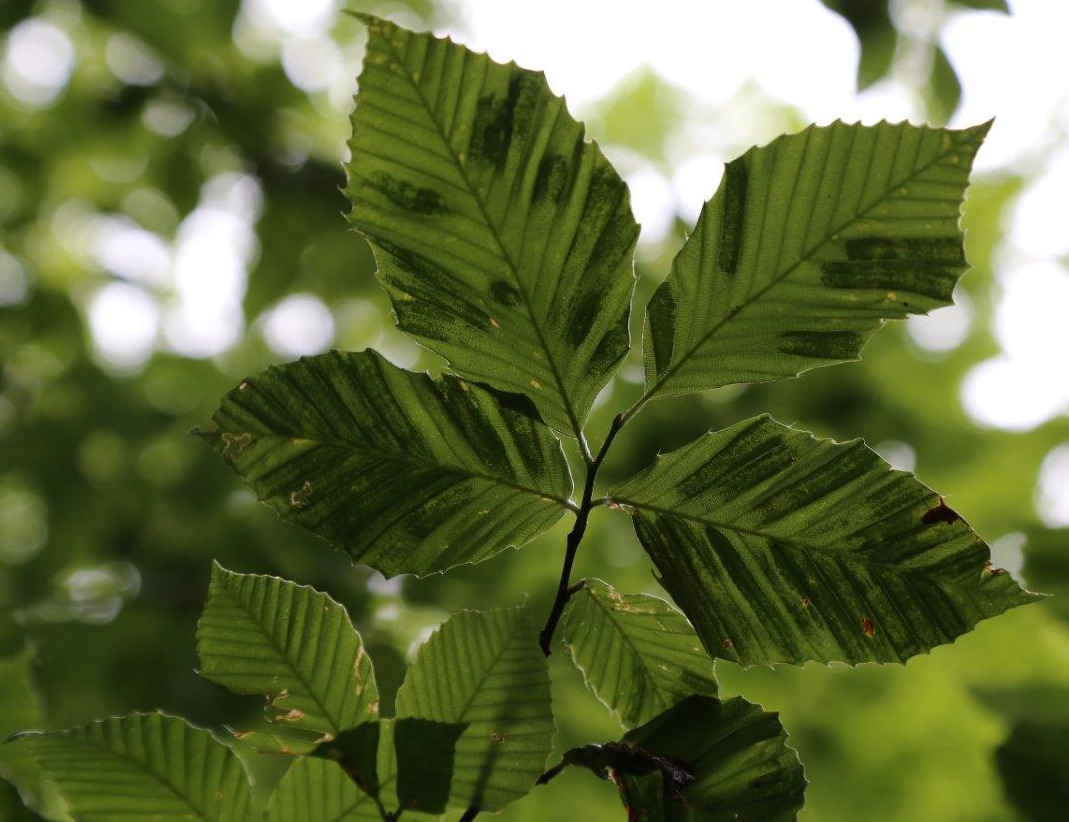Beech leaf disease
Information about beech leaf disease, a disease of beech trees caused by a worm-like, parasitic nematode, Litylenchus crenatae ssp. mccannii.
Overview
- Invasive nematodes of this genus originate from the Pacific Rim (Korea, Japan and New Zealand).
- The disease causes leaf deformity in beech trees of all ages.
- Young trees die as a direct result of this disease.
- First detected in Ontario in 2017, the disease is present in the lower half of Southern Ontario.
- The range of the disease may continue to spread. DNA of the nematode that causes beech leaf disease has been found beyond the range of the disease in Ontario.
The term “invasive” refers to a species that has moved outside of its native habitat and threatens the new environment, economy or society by disrupting local ecosystems.
Learn more about invasive species in Ontario
Host species
Beech leaf disease is found in:
- forests with American beech (Fagus grandifolia)
- plantings of European (sylvatica), Oriental (Fagus orientalis) and Chinese (Fagus engleriana) beech in North America
Characteristics and life cycle
- Nematodes are microscopic worms that feed on developing buds in the fall and spring that disrupt normal leaf development.
- Leaf tissue from buds shows signs of damage (banding, curling, thickened tissue) when leaves unfurl.
- Nematodes feed on leaf tissue between veins during summer months.
- Nematode numbers increase from spring to fall and they overwinter in buds and leaf litter.
- How the nematode is spread is being investigated. There is some evidence for wind, rain and insect spread.
Symptoms and damage
- Early symptoms of beech leaf disease are dark-green stripes or bands between lateral veins of leaves.
- Severe symptoms include thickened or leathery leaves that may be yellow, curled or deformed; leaves may drop early and buds may not develop.
- Sapling-sized trees may die within two to five years, with older trees taking longer to show effects.
- Infected trees can be more susceptible to environmental stresses such as drought.

Control measures
The nematode thought to cause beech leaf disease can unintentionally be spread to non-infested forested areas.
To stop the spread, do not move:
- beech seedlings
- leaf litter
- firewood
Learn more about the ways you can help stop the spread of invasive species.
Updated: August 28, 2025
Published: June 12, 2020